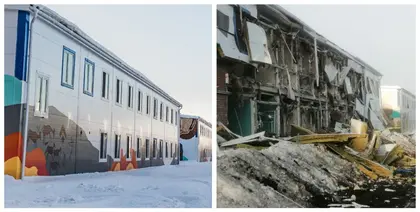Ukrainian UJ-22 attack drones, which were attributed to Ukraine’s HUR military intelligence directorate, targeted an oil refinery in the city of Nizhnekamsk and a military drone production site in Russia’s Alabuga special economic zone on Tuesday morning.
The fact that Ukraine’s unmanned aerial vehicles (UAV) were able to strike at over 1,250 kilometers surprised most people, not the least the public in Tatarstan who, according to Tatar political expert Ruslan Aysin cited by the Moscow Times, “is scared and shocked by the fact that… the war came to them, [so far] from the front line.”
JOIN US ON TELEGRAM
Follow our coverage of the war on the @Kyivpost_official.
At least 13 people, including two 17-year-olds, were injured after one of the drones hit a workers' dormitory. According to Tatarstan’s Health Ministry, all the injured were students at the Alabuga Polytechnic College. The Russian news site Insider.RU reported on the nationalities of this injured on Wednesday which includes students from Russia, Kyrgyzstan, Sri Lanka, Zimbabwe, Rwanda, Congo, Kenya, Nigeria, and South Sudan. Six of the wounded remain in hospital.
As the investigative news site Protocol reported in July 2023 many of these college students are involved in assembling Iranian Shahed kamikaze drones, which are produced at the Alabuga factory.
Protocol’s investigation said the students were forced to work at the factory under difficult conditions, being paid very little and parents threatened with huge fines if their children refused to work or were expelled.

British Defence Intelligence Update Ukraine 23 December 2024
Having issued an official confirmation of Tuesday’s attack Tatarstan’s head, Rustam Minnikhanov, wrote on social media: “It is especially important right now to remain calm and not to succumb to panic, which is being spread deliberately by those who committed this crime.”

Later in the day, Minnikhanov visited Yelabuga, where the factory is located, and spoke with students from the Polytechnic College. In a staged meet and greet, at which the pupils held Tatarstan’s green-white-red flags aloft, he said according to the local news outlet Groza,“I see that you are doing great, you can’t be frightened. But you need to be more alert, more careful.”
He posted similar messages of encouragement on his VKontakte (Russia’s Facebook) which did not allay the fears of many of his constituents who replied to his post.
One wrote, “It is difficult to keep calm when you… take your kids to a kindergarten that is only one kilometer away from the biggest industrial sites.”
Another said “If something [worse happens], then we can’t even get out of Nizhnekamsk. It looks like there are no measures to protect the people.”
A user called Rasim Khurmatov wanted to know why Tatarstan officials had not responded to “long-standing warnings” that Ukraine had declared drone-making factories to be legitimate military targets, but there had been no increase in the region’s security precautions.
Others were concerned that the many oil refineries and chemical plants located in Tatarstan, and the neighboring Bashkortostan could become the next targets.
You can also highlight the text and press Ctrl + Enter






